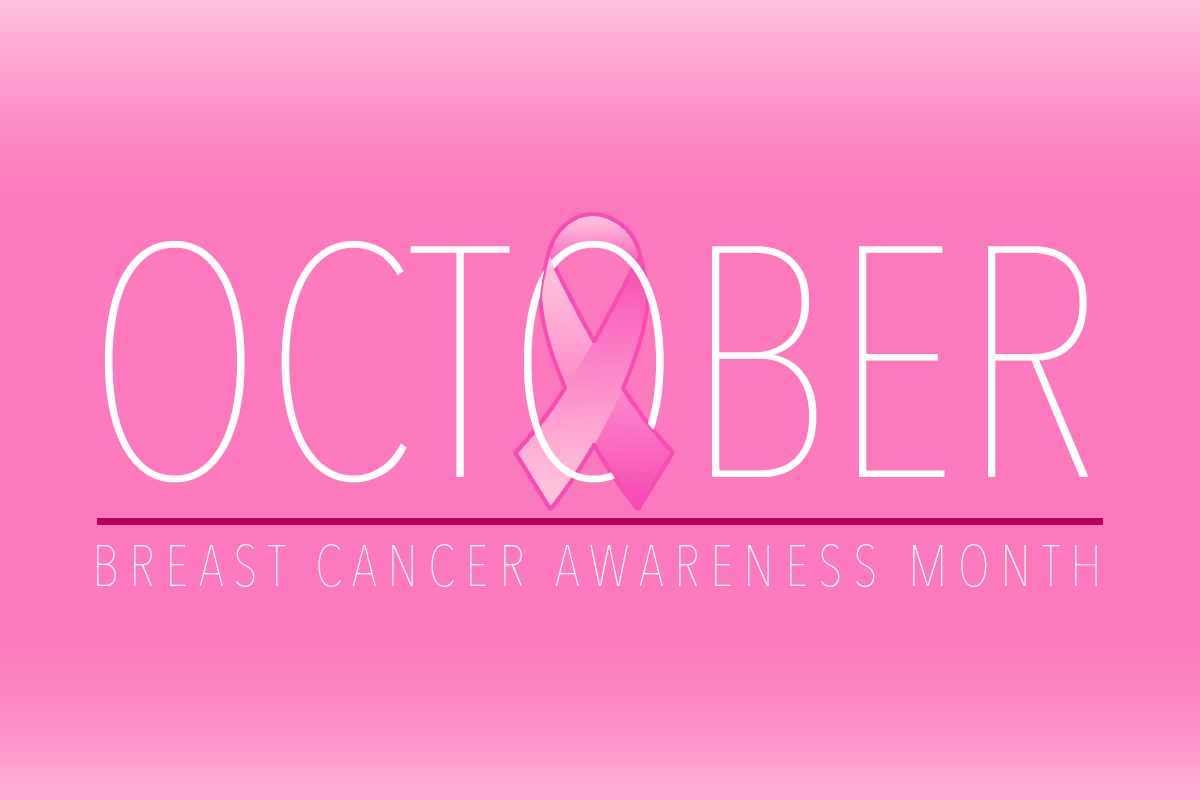 October is Breast Cancer Awareness Month
October is Breast Cancer Awareness Month
Breast cancer is the leading type of cancer in women, accounting for 25% of all cases. 1 in 8 women born today in the United States will get breast cancer at some point. National Breast Cancer Awareness Month is a chance to raise awareness about the importance of early detection. Spread the word about breast cancer and mammograms and encourage others to get involved!
What is Breast Cancer?
Cancer grows when a cell’s DNA is damaged. In particular, breast cancer is one that develops from breast tissue. This cancer most commonly develops in cells from the lining of milk ducts (ductal carcinomas) and the lobules that supply the ducts with milk (lobular carcinomas). However, there are also more than 18 sub-types of breast cancer. Outcomes for breast cancer vary depending on cancer type, the extent of disease, and the person’s age, however, survival rates are high.
How Do You Diagnose Breast Cancer?
It is important for you to become familiar with your breasts so you can note when changes occur. The first sign of breast cancer may result in a lump, nipple inversion, an area of irritation or redness, thickening of the breast skin, and persistent breast pain. You should do a self-exam monthly and note any changes to your doctor. A clinical breast exam is done by your doctor to check for lumps and physical changes in your breasts. The goal of clinical exams is to detect breast cancer in its earliest stages. If there is an abnormality, your doctor will issue a diagnostic scan.
Mammogram
A mammogram is an x-ray that allows a qualified specialist to examine breast tissue for any suspicious areas. Screening mammograms are administered to detect breast cancer in women with no apparent symptoms.Diagnostic mammograms are used after suspicious results are detected on a screening mammogram or if there is an abnormal area noted by the patient or patient’s physician during a clinical breast exam, thus providing a more detailed x-ray of the breast using specialized techniques. In addition to finding tumors that are too small to feel, mammograms may also spot ductal carcinoma in situ. These are abnormal cells in the lining of the breast duct which may become invasive cancer in some women.
Do Mammograms Hurt?
Mammography does compress the breasts and can sometimes cause slight discomfort for a very brief period of time. Patients who are sensitive should schedule their mammograms a week after their menstrual cycle so that the breasts are less tender. Your doctor may say it is fine to take acetaminophen an hour before the x-ray is performed to prevent discomfort too.
What to expect during a Mammogram
During your mammogram, the technologist will position your breast in the mammography unit. Your breast is placed on a special platform and the technologist will gradually compress your breast with a special paddle. The patient must hold very still and may be asked to keep from breathing for a few seconds while the x-ray is taken. The examination generally takes about 30 minutes to complete.
Mammogram Preparation
Your skin should be clean. Please do not use any deodorant, perfume, powder, lotion or other preparations in your underarm area or on your breasts. Residue from such preparations can create misleading results and compromise your exam.
Seton Imaging is a proud supporter of Breast Cancer Awareness Month. If you have concerns about breast cancer, schedule your Mammogram today.
If you have any questions, you can always feel free to give us a call at (716) 633-8675 or fill out this form.
